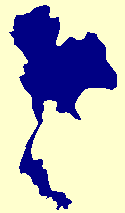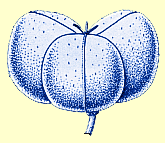
Flora of Thailand
Euphorbiaceae

 |
|
 |
Goto on this page:
Sw., Prodr.: 95. 1788; Baill., Ιtude Euphorb.: 530. 1858; Benth. in Benth. & Hook.f., Gen. Pl. 3: 255, 337. 1880; Pax in Engl. & Prantl, Nat. Pflanzenfam. 3, 5: 100. 1890; Pax & K.Hoffm. in Engl., Pflanzenr. IV.147.v: 81. 1912; in Engl. & Harms, Nat. Pflanzenfam. ed. 2, 19c: 191. 1931; G.L.Webster, J. Arnold Arbor. 48: 387. 1967; Taxon 32: 304. 1983; Ann. Missouri Bot. Gard. 81: 122. 1994; Esser, Blumea 44: 168. 1999; in Radcl.-Sm., Gen. Euphorbiacearum: 382. 2001; G.L.Webster in Kubitzki, Fam. Gen. Vasc. Pl. 11: 195. 2014. ?Ateramnus P.Browne, Hist. Jam.: 339. 1756. Sarothrostachys Klotzsch, Arch. Naturgesch. 7: 185. 1841. Stillingia Garden ex L. Section Sarothrostachys (Klotzsch) Baill., Ιtude Euphorb.: 524. 1858. Excoecaria L. Section Gymnanthes (Sw.) Griseb., Fl. Brit. W. Ind. (1859) 50. Sebastiania Spreng. Section Gussonia (Spreng.) Mόll.Arg. Subsection Sarothrostachys (Klotzsch) Mόll.Arg. in DC., Prodr. 15, 2: 1175. 1866. Sebastiania Spreng. Section Sarothrostachys (Klotzsch) Benth. in Benth. & Hook.f., Gen. Pl. 3: 336. 1880. Sapium Jacq. Section Gymnanthes (Sw.) T.Post & Kuntze, Lex. Gen. Phan. (1903) 498. Duvigneaudia J.Lιonard, Bull. Jard. Bot. Ιtat 29: 15. 1959.
Shrubs to trees. Monoecious. Flowering and fruiting twigs with leaves. Indumentum absent (rarely present in Neotropical species). Stipules broadly ovate-triangular, 0.52 mm long, undivided, glandless. Leaves regularly alternate; petiole short (up to 2 cm long), much shorter than blade, glandless; blade ovate to elliptic, 313 cm wide, base acute to subcordate, sometimes slightly attenuate, margin entire (serrate in some Neotropical species), apex acute to acuminate (rarely retuse in Neotropical species), glandless above, lower surface whitish-farinose or smooth and with a row of strictly marginal or submarginal glands, basal ones sometimes enlarged, secondary veins 1016 pairs, arching and joined or not joined towards the margin, tertiary venation reticulate. Inflorescences terminal and axillary, yellowish, simple or compound, in the latter case several times branched only near base and giving the resemblance of crowded axillary thyrses, with short or no sterile basal region, pistillate and staminate flowers in same thryse but pistillate flowers often lacking, staminate thyrse 660 by 25 mm. Bracts of staminate cymules broadly triangular to elliptic, sometimes removed by a peduncle, glandless or with a pair of globose-cylindrical glands touching the axis of the thyrse or removed by a peduncle. Staminate cymules 13(5)-flowered; bracteoles present. Staminate flowers with short to distinct (up to 2 mm long) pedicel, hardly elongating when flowering; calyx with usually 3 sepals, quite small and fused only at very base (larger and mostly fused in some Neotropical species; stamens 3 (up to 12 in some Neotropical species), filaments slightly longer than anthers. Pistillate flowers 13 at base of thyrse; pedicel distinct and often considerably elongating after fertilization to up to c. 20 cm length; calyx with 3 sepals, triangular, free to basally united, glandless; ovary 3-locular, sometimes with 3 pairs of appendages but never with rows of multiple appendages; style present, stigmata undivided, glandless. Fruit with distinct, often very long (up to 20 cm) pedicel; 3-seeded, smooth or with 3 pairs of appendages, dry and regularly opening along the septa (indehiscent and drupaceous in an African species); pericarp moderately thick (fruit length/pericarp thickness = c. 10/1), septa with a separate basal triangle and 1, sometimes divided, vascular strand each, remaining columella alate except at base. Seeds elliptic, dry, smooth, without caruncle (in some Neotropical species with a broadly conical caruncle).
Including Sarothrostachys and Duvigneaudia, Gymnanthes comprises c. 25 species. 21 of them occur in the New World from the USA (Florida) to the Antilles and Paraguay, two in Africa (Congo Basin from Camerun to Zaire), and two in Asia, of which one was recently found in Thailand.
Gymnanthes remota (Steenis) Esser, Blumea 44: 172, Fig. 3, Map 3. 1999; H.Zhu, H.Wang & B.G.Li, Acta Phytotax. Sin. 38: 462. 2000. Sebastiania remota Steenis, Bull. Bot. Garden Buitenz., ser. 3, 17: 410. 1948; Airy Shaw, Kew Bull. 36: 344. 1981.
Shrub to small tree, up to 6.5 m high. Stipules c. 0.51 by 0.75 mm. Leaves: petiole 0.40.9 cm long; blade elliptic, 812 by 3.54 cm, base obtuse, apex subacuminate, lower surface smooth and brighter but never whitish-glaucous and with (0)4 glands per side, longitudinally elliptic, c. 0.7 by 0.20.3 mm and strictly marginal, basal glands not enlarged, secondary veins 1015 pairs, angle with midrib 7580°, arching and distinctly looped. Inflorescences usually axillary and rarely compound, without a sterile basal region, staminate part (10)4065 by 25 mm. Bracts of staminate cymules 0.61 by 0.5 mm, not removed from the axis, apex subacuminate, their glands 0.40.6 mm in diam. Staminate cymules 1-flowered. Staminate flowers: pedicel 11.7 mm long when flowering; calyx 0.50.75 mm long; stamens with filaments 0.5 mm long when flowering, hardly visible in bud, anthers 0.30.4 mm long. Pistillate flowers: pedicel elongating to 1090 mm length; calyx with free sepals c. 0.50.7 mm long; ovary with 3 pairs of small appendages ("muricate"); style c. 0.51 mm long, stigmata 11.5 mm long. Fruits pendant on pedicel up to 9 cm long; schizocarp circular to transversely elliptic in outline, sulcate, mericarps 1011 mm long; pericarp 1.21.5 mm thick. Seeds 0.70.75 by 0.550.65 mm, without caruncle, brown, spotted.
T h a i l a n d. NORTHERN: Chiang Mai.
D i s t r i b u t i o n. China (Yunnan), Thailand (Chiang Mai), Cambodia, N Sumatra.
E c o l o g y. Found in montane rainforest, also on limestone; locally common. Altitude 1,6002,000 m. Flowering: January, March, August; fruiting: June, July.
N o t e. Typical for the species, in comparison to the other Asian species, G. borneensis (Pax & K.Hoffm.) Esser, are the strictly marginal glands on the lower leaf surface of which the basal ones are not enlarged (slightly distant from margin and basal ones larger in G. borneensis); the leaves are not whitish beneath, the secondary veins are distinctly joined towards the margin, and the biglandular floral bracts touch the axis (often whitish underneath, secondary veins marginally indistinctly jounes, glandless floral bracts elevated from the axis in G. borneensis).